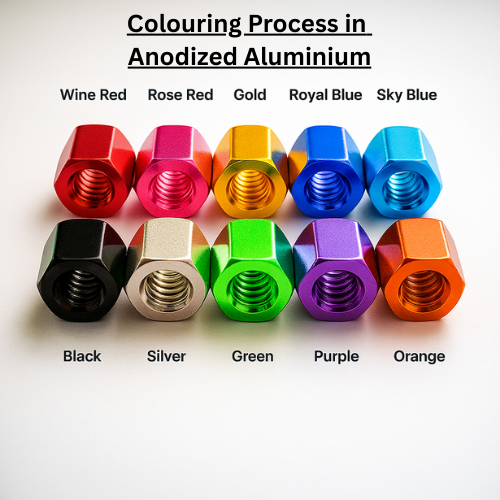Applications of the Colouring Process in Anodizing Aluminium Aluminium is one of the most versatile and widely used metals across industries—from aerospace to consumer goods. One process that significantly enhances
Continue reading

Applications of the Colouring Process in Anodizing Aluminium Aluminium is one of the most versatile and widely used metals across industries—from aerospace to consumer goods. One process that significantly enhances
Continue reading
Introduction Anodizing is an advanced electrochemical process that enhances the surface properties of metals, especially aluminium by forming a controlled oxide layer. This protective coating improves corrosion resistance, surface hardness,
Continue reading
Solar energy is revolutionizing the global power landscape — and at the heart of every photovoltaic (PV) system lies a framework of engineered materials designed for efficiency, durability, and sustainability.
Continue reading
As design trends shift toward minimalist, modern, and sustainable aesthetics, the materials used in furniture and furnishings are evolving too. Among these, anodized aluminum has emerged as a frontrunner in
Continue reading
As the world accelerates toward renewable energy solutions, solar photovoltaic (PV) systems are at the forefront of global energy transformation. But behind the solar cells themselves lies a crucial enabler
Continue reading
When it comes to protecting, enhancing, and finishing metal surfaces, two processes dominate industrial and manufacturing applications, anodizing and electroplating. Both are electrochemical methods that improve a metal’s appearance, resistance
Continue reading
Introduction Rust quietly eats away at more than just metal, it corrodes reliability, performance, and profit. For industries relying on machinery, automotive components, or metal tooling, long-term rust prevention isn’t
Continue reading
Corrosion quietly damages industrial machinery, automotive parts, and precision tools every day. It can cause major downtime, high maintenance costs, and even equipment failure. One of the most effective ways
Continue reading
Rust silently damages millions of dollars’ worth of industrial machinery every year. It weakens metals, raises maintenance costs, and reduces performance. Fortunately, with the right preventive strategies and advanced solutions
Continue reading
Introduction In modern automotive manufacturing, rust is a silent adversary that erodes more than just metal—it compromises safety, performance, and profitability. Whether it’s a hatchback, a luxury sedan, or a
Continue readingCall Us Now
Phone: +91 22 66993000
Send a Message
Support: corporatecommunications@growel.com
Main Office
Growel Corporate, Akurli Road, Kandivli (E),
Mumbai - 400 101, Maharashtra, India
Grauer & Weil (India) Limited © 2022.